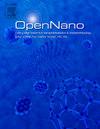Microbicidal mechanisms for light-activated molecular nanomachines in Mycobacterium smegmatis: A model for pathogenic bacteria
Q2 Pharmacology, Toxicology and Pharmaceutics
引用次数: 0
Abstract
There is a global health crisis of antimicrobial resistance, responsible for over a million deaths annually. Mycobacterial infections are a major contributor to this crisis, causing more deaths than any other single infectious agent. Notably, the rise of multidrug-resistant (MDR), extensively drug-resistant (XDR), and totally drug-resistant (TDR) strains of Mycobacterium tuberculosis has led to higher mortality rates and challenge all existing antibiotic regimens. Light-activated molecular nanomachines (MNMs) represent a promising class of broad-spectrum antimicrobial agents that could help counter this rise in antimicrobial resistance. Addressing a key knowledge gap, this study explores the mechanisms of action for MNMs in Mycobacterium smegmatis, a surrogate model for pathogenic mycobacteria. We show that fast-rotor MNMs significantly reduce bacterial viability, achieving up to 97 % reduction in M. smegmatis with 30 minutes of light activation when compared to non-activated MNM 1 (p < 0.0001, t = 24.55), as determined by an unpaired t-test. Using fluorescence and confocal microscopy, we also show the colocalization of MNM 1 with M. smegmatis as part of their mechanism of action. The ability to translate these observations to pathogenic mycobacteria was demonstrated by the ability of MNM 1 to kill 93.5 % of M. tuberculosis with 5 minutes of light activation when compared to non-activated MNM 1 (p < 0.0001, t = 19.24). These findings suggest that MNMs have the potential to be innovative and sustainable antimicrobial agents for the treatment of pathogenic mycobacterial infections.

耻垢分枝杆菌中光激活分子纳米机器的杀微生物机制:一种致病菌模型
全球存在抗微生物药物耐药性的健康危机,每年造成100多万人死亡。分枝杆菌感染是造成这一危机的一个主要因素,它造成的死亡人数超过任何其他单一传染因子。值得注意的是,耐多药(MDR)、广泛耐药(XDR)和完全耐药(TDR)结核分枝杆菌菌株的增加导致了更高的死亡率,并对所有现有的抗生素治疗方案构成了挑战。光激活分子纳米机器(MNMs)代表了一类有前途的广谱抗菌剂,可以帮助对抗这种抗菌素耐药性的上升。为了解决一个关键的知识缺口,本研究探讨了MNMs在耻垢分枝杆菌(致病性分枝杆菌的替代模型)中的作用机制。我们发现,快速转子MNMs显著降低了细菌活力,与未激活的MNM 1相比,在30分钟的光激活下,耻垢分枝杆菌的活性降低了97% (p <;0.0001, t = 24.55),由非配对t检验确定。利用荧光和共聚焦显微镜,我们还发现MNM - 1与耻垢分枝杆菌的共定位是其作用机制的一部分。与未激活的MNM 1相比,MNM 1在5分钟的光激活下杀死93.5%的结核分枝杆菌,证明了将这些观察结果转化为致病性分枝杆菌的能力(p <;0.0001, t = 19.24)。这些发现表明,MNMs有潜力成为治疗致病性分枝杆菌感染的创新和可持续的抗菌药物。
本文章由计算机程序翻译,如有差异,请以英文原文为准。
求助全文
约1分钟内获得全文
求助全文
来源期刊

OpenNano
Medicine-Pharmacology (medical)
CiteScore
4.10
自引率
0.00%
发文量
63
审稿时长
50 days
期刊介绍:
OpenNano is an internationally peer-reviewed and open access journal publishing high-quality review articles and original research papers on the burgeoning area of nanopharmaceutics and nanosized delivery systems for drugs, genes, and imaging agents. The Journal publishes basic, translational and clinical research as well as methodological papers and aims to bring together chemists, biochemists, cell biologists, material scientists, pharmaceutical scientists, pharmacologists, clinicians and all others working in this exciting and challenging area.
 求助内容:
求助内容: 应助结果提醒方式:
应助结果提醒方式:


